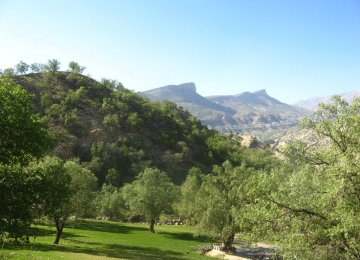The western Kermanshah Province has been experiencing an increase in the frequency and severity of dust storms, which has resulted in a steep rise in the number of people suffering from respiratory difficulties, according to the director of laboratory affairs at the provincial Department of Environment (DoE) office Saeed Dezfulinejad.
Speaking to ILNA, Dazfulinejad said that Kermanshah has become “a gateway for dust storms” to enter Iran from Iraq, and added that cities closer to the border, such as Qasr-e Shirin, have borne the brunt of the dust storms.
Stressing that there are no sources of dust storms in the province, the official said, “Dust storms do not recognize borders.”
“This is not the first time we have had to deal with the phenomenon; it has become a regular occurrence in the past 10 years. It is usually worse during the hotter months, due to the scarcity of rainfall.”
Kermanshah lacks equipment to predict inbound dust storms well in advance, Dezfulinejad said.
Asked about measures taken to curb the impact of dust storms, Dezfulinejad said that in 2009 and 2014 the government issued directives aimed at reducing the impact of dust storms, and working groups were formed. “Unfortunately, there is not much that can be done when the sources of the problem are in other countries.”
Elaborating on the role of vegetation in reducing the impact of dust storms, he said, “Even though vegetation normally plays a key role, it is as effective in Kermanshah.”
If the sources of dust storms were local, the vegetation could be of immense help, he said, adding that because the sources lie beyond the borders, dust storms reach hundreds of meters in height by the time they hit Kermanshah. “Trees are not tall enough to exert an effect.”
In April the DoE and the governorate of Kermanshah signed a memorandum of understanding, obliging the DoE to make Kermanshah a priority in the fight against dust storms.





